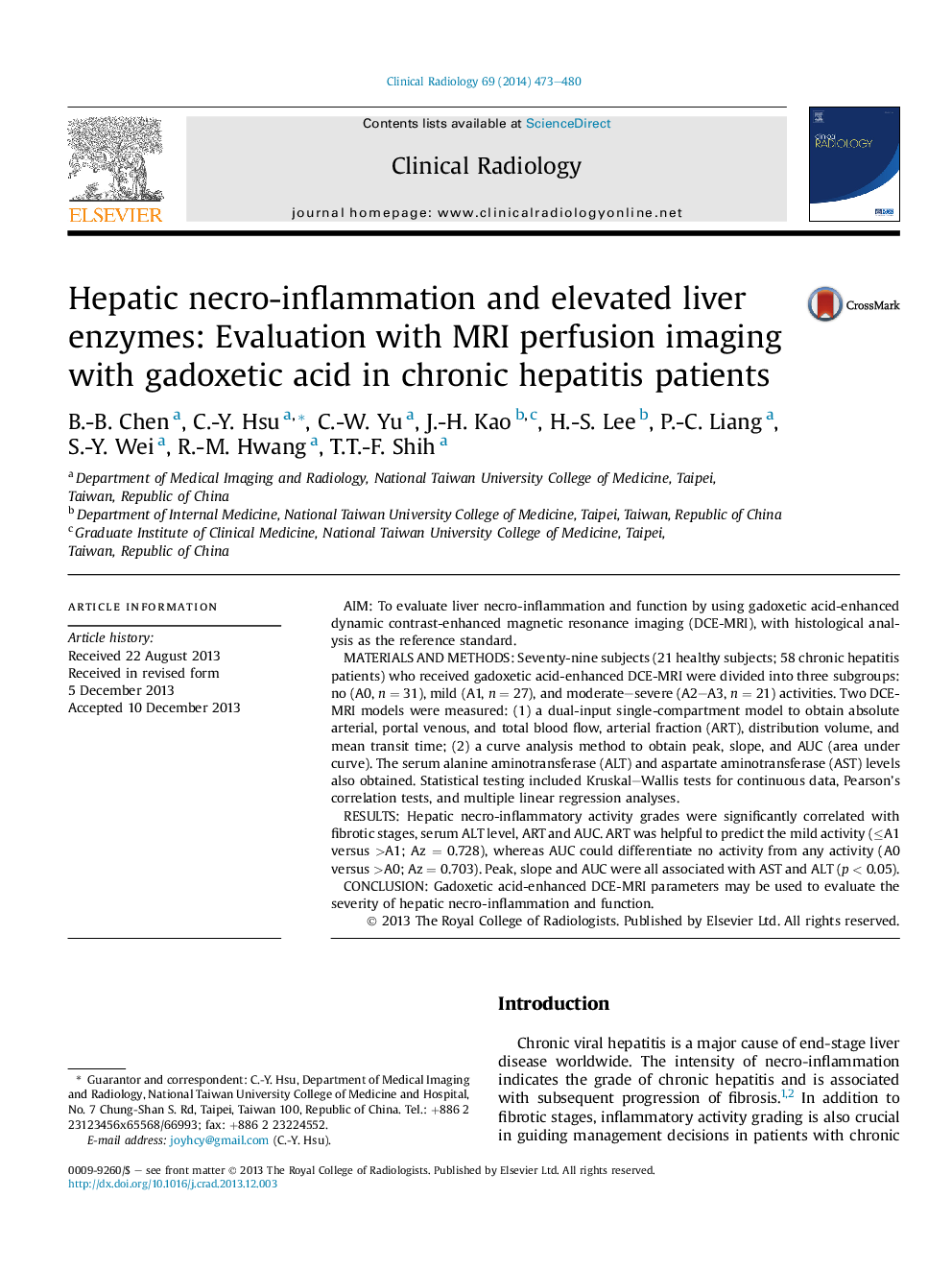| Article ID | Journal | Published Year | Pages | File Type |
|---|---|---|---|---|
| 3982339 | Clinical Radiology | 2014 | 8 Pages |
AimTo evaluate liver necro-inflammation and function by using gadoxetic acid-enhanced dynamic contrast-enhanced magnetic resonance imaging (DCE-MRI), with histological analysis as the reference standard.Materials and methodsSeventy-nine subjects (21 healthy subjects; 58 chronic hepatitis patients) who received gadoxetic acid-enhanced DCE-MRI were divided into three subgroups: no (A0, n = 31), mild (A1, n = 27), and moderate–severe (A2–A3, n = 21) activities. Two DCE-MRI models were measured: (1) a dual-input single-compartment model to obtain absolute arterial, portal venous, and total blood flow, arterial fraction (ART), distribution volume, and mean transit time; (2) a curve analysis method to obtain peak, slope, and AUC (area under curve). The serum alanine aminotransferase (ALT) and aspartate aminotransferase (AST) levels also obtained. Statistical testing included Kruskal–Wallis tests for continuous data, Pearson's correlation tests, and multiple linear regression analyses.ResultsHepatic necro-inflammatory activity grades were significantly correlated with fibrotic stages, serum ALT level, ART and AUC. ART was helpful to predict the mild activity (≤A1 versus >A1; Az = 0.728), whereas AUC could differentiate no activity from any activity (A0 versus >A0; Az = 0.703). Peak, slope and AUC were all associated with AST and ALT (p < 0.05).ConclusionGadoxetic acid-enhanced DCE-MRI parameters may be used to evaluate the severity of hepatic necro-inflammation and function.
